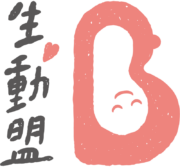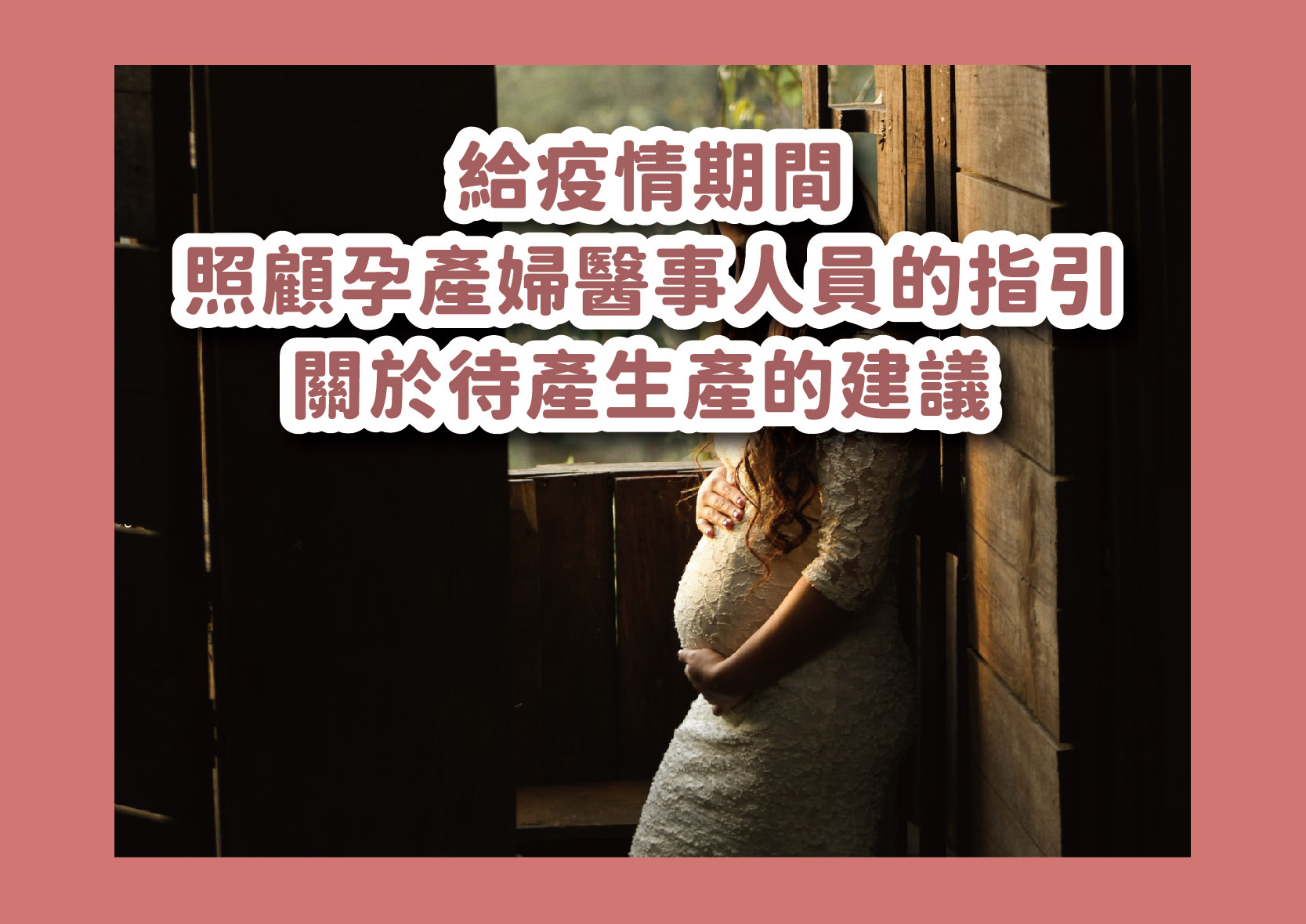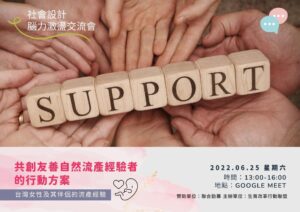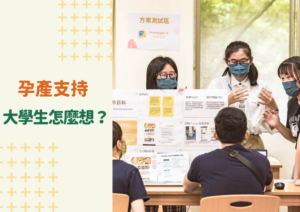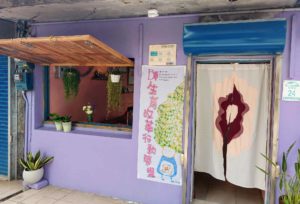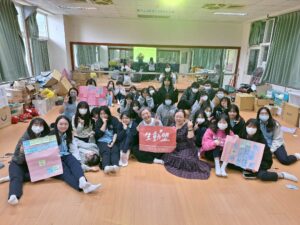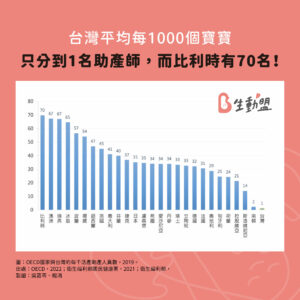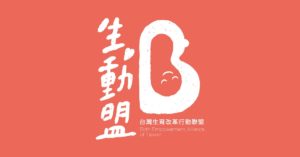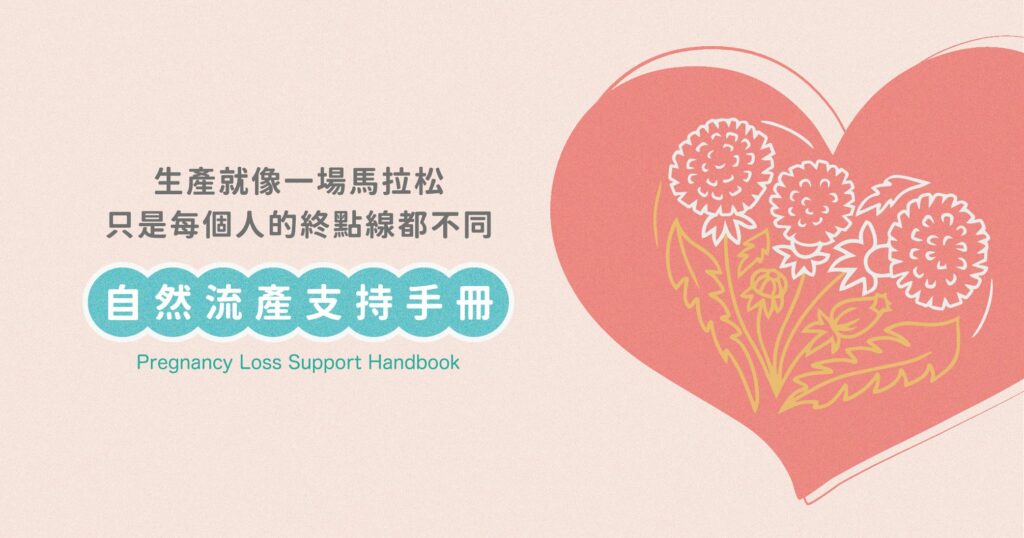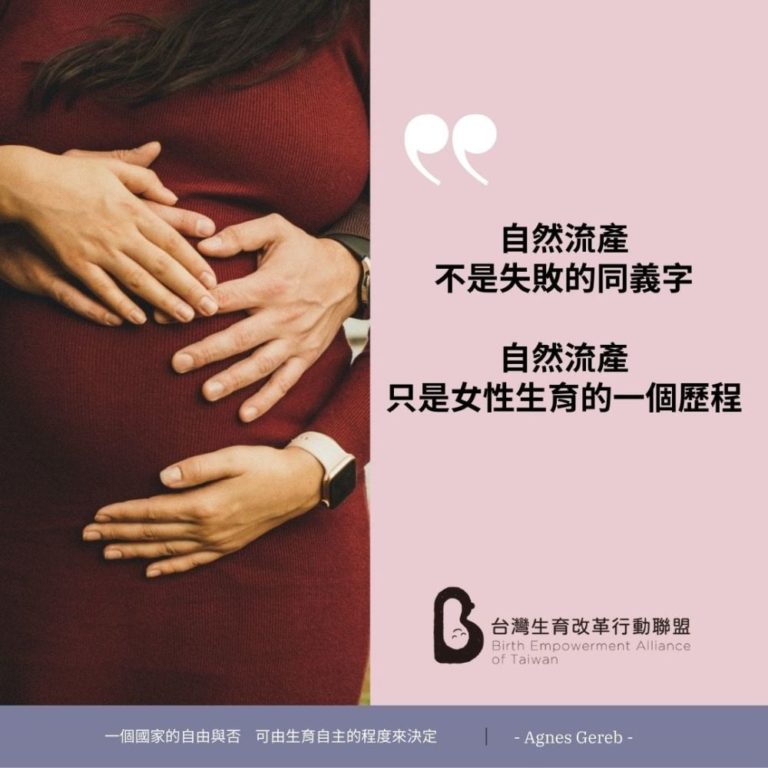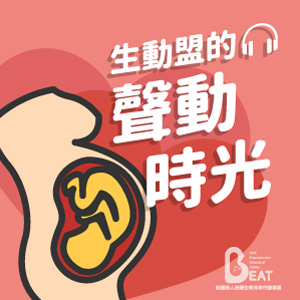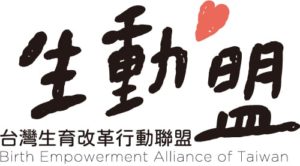Women admitted to hospital, including maternity units, should be offered testing for SARS- CoV-2 on admission.This includes women admitted for intrapartum care.
懷孕產婦入院報到後,在進入醫院或是產房前,都應該進行新冠病毒的篩檢。即便是已經進入產程的產婦,也需經過篩檢流程。(譯注:目前臺灣部分醫院,如果產婦出現產兆,可以先進入產房等待,在產房進行快篩。新聞來源:https://www.ettoday.net/news/20210517/1983959.htm)
4.1 對於曾經出現陽性或是被驗出陽性的無症狀待產婦女,有哪些注意事項?
建議:
- Low risk women who test positive for SARS-CoV-2 within 10 days prior to birth who are asymptomatic and wish to give birth at home or in a midwifery-led unit, should have an informed discussion around place of birth with their clinician.
任何在生產前10天內曾經有陽性反應的低風險、無症狀的婦女,如果想要在家生產或由助產師接生者,都應該在生產前與相關的臨床人員進行討論。
- For asymptomatic women who test positive for SARS-CoV-2 on admission, continuous electronic fetal monitoring (CEFM) during labour using cardiotocography (CTG) is not recommended solely due to a positive test.
對於任何在入院時才有陽性反應的無症狀產婦,並不一定需要持續性胎心宮縮監測器(CTG)持續監控。- Fetal monitoring options should be discussed with the woman, acknowledging the current uncertainties in women who are asymptomatic with a positive test for SARS-CoV-2.
考量到目前對於無症狀陽性反應的產婦有許多不確定性,醫護人員應該與產婦討論,對胎兒的持續監控的必要。
- Women who test positive for SARS-CoV-2 should be offered delayed cord clamping and skin-to-skin contact with their baby in line with usual practice.
即便產婦出現陽性反應,也應該延遲斷臍、並在斷臍前進行母嬰肌膚接觸。
- Fetal monitoring options should be discussed with the woman, acknowledging the current uncertainties in women who are asymptomatic with a positive test for SARS-CoV-2.
指引的證據摘要與理由(Summary of evidence and rationale of guidance)
NHS England and NHS Scotland have recommended that women (and their support partners in NHS England) should be offered testing for SARS-CoV-2 when they are admitted to maternity units to give birth.
英格蘭國民保健署與蘇格蘭國民保健署皆建議產婦與陪產者在入院,進入產房前應該要進行SARS-CoV-2的篩檢。
While fetal compromise in women who are symptomatic of COVID-19 has been reported by some case series, it is reassuring that measures of fetal compromise at birth for asymptomatic women who test positive for SARS-CoV-2 are not reported to differ from women who test negative.
雖然有幾例出現症狀的確診產婦發生胎兒窘迫的現象,但無症狀、檢測為陽性的產婦與檢測為陰性的產婦,發生胎兒窘迫的情形是相同的。
The need for CEFM for asymptomatic women who test positive for SARS-CoV-2 but who are otherwise low risk for labour (e.g. CEFM would not otherwise be indicated by NICE Clinical Guideline [CG190] on Intrapartum care for healthy women and babies) is an area of clinical uncertainty because of the lack of robust evidence. It is, therefore, important that asymptomatic women of low obstetric risk should continue to have the risks and benefits of CEFM discussed with them on a holistic basis.
對於無症狀、陽性反應、相對低風險的產婦(NICE 臨床指引裡「產婦與胎兒的生產照護」的章節中,並不建議低風險產婦需要持續監測),是否需要持續電子胎兒監測存在爭議,目前還沒有足夠的實證。因此醫療人員必須與無症狀、低孕產風險的產婦,全面地解釋使用(或不使用)持續電子胎兒監測的好處與壞處。
There is no evidence that the practice of delayed cord clamping and skin-to-skin contact between mother and baby increases the transmission of SARS-CoV-2 to the neonate. The well documented benefits of these practices should be discussed with the woman to make an informed choice and implemented in line with pre-pandemic practice. In the absence of other evidence, NICE CG190 should be followed.
目前仍然沒有證據顯示延遲斷臍及母嬰肌膚接觸,會增加新生兒感染COVID的風險。因此這些在疫情之前就已經具有實證且執行良好的措施應該和婦女討論以進行知情選擇。缺乏明確實證的話,應該繼續遵循NICE CG190的各項建議。
4.2 應該如何照顧,疑似感染或感染 COVID-19 、且出現症狀的產婦?
建議
- Women with mild COVID-19 symptoms can be encouraged to remain at home (self-isolating) in early (latent phase) labour consistent with routine care.
建議感染 COVID-19 ,症狀輕微的產婦在分娩初期(潛伏期)先留在家中(自我隔離),其餘則維持例行的照護。
- If there are no concerns regarding the health of either the woman or baby, women who attend the maternity unit and would usually be advised to return home until labour is more established can still be advised to do so, unless private transport is not available.
如果產婦或胎兒沒有任何特殊需要照護的醫療情境,通常會建議目前在產科住院的產婦,先行回家等待,直到產兆更加明確再前往醫院。除非,考量到部分沒有私人交通工具的產婦。- Women should be provided with the usual advice regarding signs and symptoms of labour, but also be informed about symptoms that might suggest deterioration related to COVID-19 and be advised to call back if concerned.
應例行地充分告知產婦有關分娩的徵兆和症狀,同時應該說明與 COVID-19 感染,狀況變差時的症狀,並建議產婦如果擔心的話隨時回電。
- Women should be provided with the usual advice regarding signs and symptoms of labour, but also be informed about symptoms that might suggest deterioration related to COVID-19 and be advised to call back if concerned.
- Advice on PPE is available in section 4.8.
第 4.8 節提供了有關 PPE(個人保護裝備) 的建議。
- Women with symptomatic suspected or confirmed COVID-19 should be advised to labour and give birth in an obstetric unit.
應建議有症狀、疑似或 COVID-19 陽性確診的產婦在醫院的產科病房分娩。
- On admission, a full maternal and fetal assessment should be undertaken, including:
入院時,應進行全面的母胎評估,包括:- Assessment of the severity of COVID-19 symptoms by the most senior available clinician.
由病房中最資深的臨床醫師,評估 COVID-19 症狀的嚴重程度。
- Maternal observations including temperature, respiratory rate and oxygen saturation.
監控產婦生理徵象,包括體溫、呼吸頻率和血氧飽和度。
- Confirmation of the onset of labour, as per standard care.
根據標準護理流程,確認分娩開始的時間點。 - CEFM using CTG.
使用持續性胎心宮縮監測器,對母胎狀態進行監測。
- Assessment of the severity of COVID-19 symptoms by the most senior available clinician.
- The following members of the MDT should be informed of the woman’s admission: consultant obstetrician, consultant anaesthetist, midwife-in-charge, consultant neonatologist, neonatal nurse-in-charge and the infection control team. Other members of the team may include an obstetric physician or respiratory physician.
以下會診的跨團隊醫護人員,應該清楚告訴他們,該產婦的入院情況:包括產科會診醫師、麻醉會診醫師、主責助產師、新生兒科會診醫師、新生兒主責護理師和感染控制團隊。團隊也可能包括產科醫師或呼吸治療師。
- Standard hourly maternal observations and assessment should be performed (as per the recommendations in NICE CG190, Intrapartum care for healthy women and babies), with the addition of hourly oxygen saturation monitoring. Oxygen therapy should be titrated to aim for saturation above 94%.
應該每小時對產婦進行例行的觀察和評估(根據 NICE CG190 中的建議,「健康產婦與胎兒的生產照護」的章節),並加上每小時血氧飽和度的監測。必要的時候,應該給予適度氧氣,以達到 94% 以上的血氧飽和度。
- EFM should be offered to women with symptomatic suspected or confirmed COVID-19 during labour and vaginal birth.
在分娩或陰道產期間,疑似或確診 COVID-19 ,且有症狀的產婦應該進行持續性胎心音監測。
- Maternal infection with SARS-CoV-2 is in itself not a contraindication to performing a fetal blood sample or using fetal scalp electrodes.
母親感染 SARS-CoV-2 並非胎兒血液採樣或使用胎兒頭皮電極(編者註:為監測胎心音的另一種方法,將將電極置入胎兒的頭皮,進行胎心率及宮縮的評估)的禁忌症。
- The number of staff members entering the room should be minimised, and units should develop a local policy specifying essential personnel for emergency scenarios.
應盡量減少進入產房的工作人員數量,各單位應制定因地制宜的政策,規定緊急情況下所需的必要人員數量。
- Women with symptomatic suspected or confirmed COVID-19 should be offered delayed cord clamping and skin-to-skin contact with their baby if the condition of the woman and infant allows.
如果產婦和嬰兒的狀況允許,應為疑似或確診 COVID-19 症狀的產婦,延遲斷臍、並進行母嬰肌膚接觸。
指引的證據摘要與理由
NHS England has produced clinical guidance on the temporary reorganisation of intrapartum maternity care during the coronavirus pandemic and a framework has been published in Scotland. COVID-19 infection and control guidance issued by PHE, on behalf of the four nations of the UK, gives advice about avoiding disease transmission. WHO has produced guidance on clinical management of COVID-19.
面對冠狀病毒大流行,英格蘭國民保健署已經制定了待產期分娩照護的臨床指引,並同時發表架構在蘇格蘭政府官方網站。 英格蘭公共衛生署 (PHE) 所發出的 COVID – 19 感控指南,代表英國四個構成國,提出各種避免傳播疾病的建議。世衛組織也同時發佈了 COVID-19 的臨床方針。
In women with symptomatic COVID-19, there may be an increased risk of fetal compromise in active labour. In addition, it is reported that women with symptomatic COVID-19 have an increased risk of caesarean birth, which further supports the guidance to give birth in an obstetric unit where timely access to emergency care is available.
對於有症狀的 COVID-19 女性確診者,進入產程活動期時發生胎兒窘迫的風險可能會增加。此外,據報導106有症狀的 COVID-19 確診產婦,進行剖腹產的風險也相對增加,這也進一步支持臨床方針中,產婦應盡可能在醫院的產科病房分娩,這樣才能更及時地處理許多緊急狀況。
While fur ther data is required in women with symptomatic confirmed or suspected COVID-19, it appears prudent to use CEFM, as would usually be recommended for maternal systemic infection.
雖然對於有症狀、確診或疑似 COVID-19 感染的產婦,是否需要持續胎心音監測,仍然需要更多研究,但通常具有全身性感染的產婦,使用持續胎心音監測似乎較為謹慎。
There is no evidence that the practice of delayed cord clamping and skin-to-skin contact between woman and baby increases the transmission of SARS-CoV-2 to the neonate.
目前沒有證據顯示延遲斷臍及進行母嬰肌膚接觸會增加新生兒感染SARS-CoV-2的機率。
4.3 對於感染 COVID-19 後康復的產婦,在分娩時有哪些建議事項?
建議
- For women who have recovered from antenatal COVID-19 without requiring admission to hospital, and who have completed self-isolation in line with public health guidance, there should be no change to planned care during labour and birth.
對於生產前感染 COVID-19 、沒有住院,目前恢復良好,並依照公共衛生機關要求,完成自我隔離的產婦,無須改變任何分娩計畫。
- For women who have recovered following a hospital admission for serious or critical COVID-19 illness needing supportive therapy, healthcare professionals should discuss and plan place of birth with the woman.While making a personalised assessment, consideration should be given to both the growth of the fetus and the woman’s choices.
對於生產前感染 COVID-19 ,狀況較嚴重甚至危及生命,曾入院後接受支持性治療,現已康復的產婦,醫療人員應該與產婦討論預計的生產地點。在對個人需求進行評估時,除了考慮到胎兒的成長情況,也同時要考量產婦自己的決定。
- Healthcare professionals should ensure that any recent growth ultrasound scan undertaken following a period of severe illness has been reviewed. If the interval between resolution of illness and presentation for bir th has been insufficient to allow for a growth scan, the implications of this should be considered in the assessment and care plan.
醫療人員應確保及審視產婦在重病一段時間後所做的每一次最近的生長超音波檢查。如果疾病緩解後到產兆出現的間隔很短,不足以進行生長超音波檢查,則應在評估和護理計畫中考慮這一點的影響。
- When participating in informed discussions with women about fetal monitoring, healthcare professionals should acknowledge evidence of fetal distress is based on small numbers of babies born to women symptomatic of COVID-19, and theoretical risks extrapolated from pregnancies affected by FGR in women with other coronaviruses.
與產婦就胎兒監測進行知情討論時,醫療人員應坦承目前對於胎兒窘迫的相關證據僅來自為數不多、出現症狀的 COVID-19 確診產婦,以及受其他冠狀病毒感染而影響胎兒生長受限的產婦,所推論出的理論風險。
指引的證據摘要與理由
There is an absence of evidence for this situation.The above is based on expert consensus.
目前缺乏這種情況的實證。以上資料僅基於專家共識。
4.4 COVID-19 大流行期間,家屬應該思考哪些事情?
建議
- Women should be supported and encouraged to have a birth partner present with them during active labour and birth if they wish to do so.
如果產婦願意的話,應支持並鼓勵產婦在生產的時候,讓家屬陪伴在她們身邊。
- Birth partners who are symptomatic, or in a period of self-isolation for confirmed SARS-CoV-2 infection, should remain in self-isolation at home and not attend the hospital.
出現症狀或因感染 SARS-CoV-2 而自我隔離中的家屬,應繼續在家中自我隔離,不要去醫院。
- NHS England recommends efforts should be made to utilise the available testing capacity to test both the woman and her birth partner to mitigate infection risk where resources allow.
英格蘭國民保健署建議,在資源允許的情況下,應盡可能利用現有的檢測對產婦及家屬進行採檢,以降低感染風險。
- Local level risk assessments should be made for each maternity service space (for example shared wards) to identify if there are elevated risks of SARS-CoV-2 transmission from the presence of a birth partner.
應為產科病房的所有空間(例如共用病房)進行詳盡的風險評估,以確定是否因家屬陪產,而增加了傳播 SARS-CoV-2 的風險。
- On attendance at the maternity unit, all birth partners should be asked whether they have experienced any symptoms suggestive of COVID-19 in the preceding 10 days, e.g. fever, acute persistent cough, changes in or loss of sense of smell (anosmia) or taste.
在進入產房前,應詢問所有陪伴的家屬,在過去 10 天內是否出現過任何可能感染 COVID-19 的症狀,例如發燒、急性持續咳嗽、嗅覺或味覺改變或喪失(嗅味覺喪失)。- If they have had symptoms within the last 10 days, the birth partner should leave the maternity unit immediately and self-isolate at home, unless they have had a negative test result for SARS-CoV-2 since the onset of symptoms.
如果家屬在過去 10 天內曾出現症狀,除非他們在出現症狀後,對 SARS-CoV-2 的檢測結果為陰性,不然應立即要求家屬離開產科病房,並在家自我隔離。
- If they have had a fever within the last 48 hours, birth partners should leave the maternity unit immediately and self-isolate at home, regardless of their test result.
如果家屬在過去 48 小時內發燒,無論檢測結果如何,家屬都應立即離開產科並在家自我隔離。
- If they have had symptoms within the last 10 days, the birth partner should leave the maternity unit immediately and self-isolate at home, unless they have had a negative test result for SARS-CoV-2 since the onset of symptoms.
- Birth partners, not otherwise advised to be self-isolating, should be allowed to stay with the woman through labour and birth, unless the birth occurs under general anaesthetic. Further guidance about access to maternity services for a birth partner and other supportive adults has been published by the NHS and should be followed as far as possible.
除非分娩需要全身麻醉,或是家屬需要自我隔離,不然應該讓家屬在分娩過程中陪伴產婦。英格蘭國民保健署已經發布了針對陪產家屬和其他支持者的進階指南,請儘可能遵循。
- Birth partners should wear a face covering unless exempt, remain by the woman’s bedside, be advised not to walk around the ward/hospital and should wash their hands frequently.
除非有特殊情況例外,否則陪產家屬應全程戴面罩,並待在產婦身邊,建議不要在病房 / 醫院周圍閒晃,並應常常洗手。
- Restrictions on visitors should follow local hospital policy.
對訪客的限制,應遵循醫院自行訂定的規範。
- Trusts and health boards should prioritise the birth partners of women who require continuous support, such as women with disabilities, communication challenges or complex medical, mental health or social factors.
醫療委員會應優先考慮需要家屬持續陪伴之產婦的需求,例如殘障人士、溝通困難或醫療、心理健康或社經因素複雜的產婦。
指引的證據摘要與理由
Having a trusted birth partner present throughout labour is known to make a significant difference to the safety and wellbeing of women in childbirth. The pandemic has affected the levels of perinatal stress experienced by pregnant women, as well as feelings of fear and loneliness in relation to their birth experience. A supportive birth partner is a recognised protective factor for the emotional wellbeing and birth experiences of women.
很多人都知道,在分娩過程中有一個值得信賴的陪產人員,在分娩時對產婦的安全與安適,有很大影響。疫情大大提升了懷孕婦女所感受的周產期壓力,也增加了在分娩時的恐懼和孤獨感。一個能夠給予支持的陪產家屬,是產婦確保情緒安適和正向分娩經驗的保護因子。
UK-wide PHE guidance, local hospital infection control and visitor policies should be adhered to.
過程中應遵守英國公共衛生部的指南、當地醫院感控原則以及對訪客的政策。
The NHS has produced guidance to support the access of birth partners and other supportive adults to maternity services in England and Scotland.
英格蘭國民保健署制定了各項指南,提供陪產家屬和其他陪產成人,獲得英格蘭和蘇格蘭的各項產科服務。
4.5 在 COVID-19 疫情期間,應與產婦就分娩時間和方式進行哪些知情討論?
建議
- Clinicians should discuss mode of birth during the COVID-19 pandemic with the woman and her family. Consideration should be given to her preferences and any obstetric or fetal indications for intervention.
臨床醫生應該與產婦及家屬一同討論在疫情期間的分娩方式。過程中應該同時考慮產婦的意願以及產婦與胎兒需要介入的狀況。
- A personalised assessment should take place to determine whether it is beneficial overall to delay a planned caesarean birth or induction of labour (IOL), and any associated appointments, for women who are self-isolating because of suspected COVID-19 in themselves or in a household contact.
應進行個人化評估,來確定延遲預定的剖腹產或引產 (IOL) 以及任何相關預約,對於因家人或自己疑似感染 COVID-19 而自我隔離中的產婦是否有益。- Consider the urgency of the birth and the risk of infectious transmission to other women, healthcare workers and, postnatally, to her baby.
請綜合考量分娩的急迫性以及傳染給其他產婦、醫護人員以及產後傳染給嬰兒的風險。
- If a planned caesarean birth or IOL cannot be delayed, follow the advice for services providing care to women admitted with suspected or confirmed COVID-19.
如果不能延遲計劃中的剖腹產或引產(IOL),請遵循為疑似或確診 COVID-19 入院的產婦提供醫療服務的流程。
- Consider the urgency of the birth and the risk of infectious transmission to other women, healthcare workers and, postnatally, to her baby.
- Women with worsening symptoms, or who are becoming exhausted, should be offered personalised information so they can make an informed decision about expediting birth.
應向症狀惡化或是已經精疲力竭的產婦,提供個人化的建議,以便她們能做有關加速分娩的知情決策。
- Senior obstetric and medical input should be sought when urgent birth of the baby is required to aid supportive care of a woman with severe or critical COVID-19 and vaginal birth is not imminent. Consider whether the benefits of an urgent caesarean birth outweigh any risks to the woman.
如果需要緊急生產,以幫助對患有嚴重或危重COVID-19的婦女提供支持性護理,而陰道分娩不是迫在眉睫,應該尋求資深產科醫療人員的幫助。思考緊急剖腹產對產婦是否利大於弊。
- The advice in section 4.8 on PPE for caesarean birth should be followed.
應遵循第 4.8 節中關於進行剖腹產時,穿戴個人保護設備的建議。
- Women and their families should be informed that donning PPE for emergency caesarean births is time-consuming but essential, and this may impact on the time it takes to assist in the birth of the baby. Consider this during decision making and, where possible, discuss during birth planning.
應告知產婦及家屬,進行緊急剖腹產時穿戴個人保護設備雖然耗時,但卻是必要措施。這有可能會影響協助分娩所需的時間。在決策過程中請謹記這一點,如果可能的話,在訂定生產計畫的時候就進行討論。
指引的證據摘要與理由
There is no evidence to favour one mode of birth over another in women with COVID-19. In the earlier UKOSS study, 12 (5%) babies tested positive for SARS-CoV-2 infection; six within the first 12 hours (two were born by unassisted vaginal birth and four by caesarean birth) and six after 12 hours (two born vaginally and four by caesarean birth). The rate of neonatal COVID-19 infection is no greater when babies are born vaginally, breastfed or stay with their mother after birth.
目前沒有證據證明感染 COVID-19 的產婦,採用哪一種分娩方式會是最好的方式。根據 UKOSS 的早期研究指出,有 12 名 (5%) 嬰兒的 SARS-CoV-2 感染檢測呈陽性:有 6 例是在生產前12小時驗出(其中 2 例為自行陰道分娩,4 例是剖腹產);有 6 例是在生產後 12 小時驗出(2 例陰道分娩,4 例剖腹產)。自然生產、哺餵母乳或母嬰同室,並不會增加新生兒感染 COVID-19 的機率。
Donning PPE is expected to lengthen the decision to birth interval because of the additional action required before commencing surgery, however, there is no evidence of this within the UK setting. A single centre cohort study demonstrated a possible longer time to birth in urgent caesarean births for women with suspected or confirmed COVID-19 (25.5 minutes [95% CI 17.5–31.75] versus 18.0 minutes [95% CI 10.0–26.25]; P = 0 .113]).This did not reach statistical significance, which may be explained by the study sample size which was not chosen to power for the outcome. Simulation training has been proposed as a way of improving the response to obstetric emergencies during the COVID-19 pandemic, including donning and doffing of PPE.
由於開始手術前需要採取額外的行動,預計穿戴個人保護設備必定會增加從決定手術到生產的間隔時間,不過目前在英國的醫療環境中,沒有實證證實這論點。在單一中心的世代研究認為,疑似或確診 COVID-19 的女性在緊急剖腹產時的分娩時間可能更長(25.5 分鐘 [95% 信賴區間為 17.5 – 31.75分鐘] 比 18.0 分鐘 [95% 信賴區間為 10.0 – 26.25];P 值為0.113 ] )。雖然數據沒有達到統計的顯著性,但這可能是由於研究樣本量過少,未達到檢力所導致。在 COVID-19 疫情期間,充分演習各種狀況,包括穿脫個人防護裝備等,有助於改善對生產時各種緊急情況的反應。
4.6 水中分娩有哪些注意事項?
建議
- Water birth is not contraindicated for women who are asymptomatic of COVID-19 and presumed or confirmed SARS-CoV-2 swab negative, providing adequate PPE can be worn by those providing care.
對於沒有 COVID-19 感染症狀、鼻腔採檢結果呈現陰性的產婦來說,並沒有禁止水中分娩,對於協助生產的人員,可以穿戴足夠的個人防護裝備。
- Women with symptomatic COVID-19 who have a cough, fever or feel unwell, should not labour and birth in water.
出現咳嗽、發燒或感覺不適等症狀、感染 COVID-19 的產婦不應在水中進行分娩。
- Asymptomatic women who have tested positive for SARS-CoV-2 should be advised there is inadequate evidence about the risk of transmission of the virus in water.
應該告知 SARS-CoV-2 檢測呈陽性的無症狀產婦,目前對於病毒在水中傳播的風險,仍然沒有足夠的證據。
- Healthcare providers should be aware that the integrity of PPE, such as a facemask, could be compromised when it becomes wet.
醫療人員應該了解,當面罩等個人防護裝備被弄濕的時候,保護力可能會受到影響。
指引的證據摘要與理由
Labour and birth in water may confer benefits to women at low risk of complications during birth. Women report that restrictions to access water birth are a concern during the pandemic, and therefore in the absence of contraindication to water birth, this option should be available. Care providers should discuss with women the lack of evidence on this topic in the context of the COVID-19 pandemic in order to facilitate informed decision making.
對分娩期間較低風險的產婦來說,水中分娩可能是有益的。有產婦對於疫情期間禁止水中分娩表示擔憂。所以如果沒有水中分娩的相關禁忌症,應向產婦提供這個生產的選擇。醫療人員應告知產婦,目前缺乏 COVID-19 疫情期間與水中生產相關的實證,讓產婦知情以做出決策。
A lack of evidence about the risks of transmission of the virus in water exists.There is evidence that SARS-CoV-2 RNA may be present in faeces, but no evidence to support that this has resulted in faecal–oral spread. However, there is a small theoretical risk that water contaminated with faeces or other maternal secretions could pose an infection risk to the baby or the staff caring for a woman bir thing in water. There is, therefore, insufficient evidence for or against the use of water in labour or birth for asymptomatic women and staff caring for them; this risk also applies when caring for a woman during labour out of water.
對於病毒是否會在水中傳播的風險,目前仍缺乏證據。有證據認為 SARS-CoV-2 的 RNA 可能會存在於糞便之中,但沒有證據顯示,這會導致糞口傳播。但是理論上,被糞便或其他母體分泌物污染的水,可能對嬰兒或協助產婦生產的人員有些微的感染風險。因此,目前也沒有足夠的證據支持或反對無症狀產婦和生產照護的人員進行水中生產;相同的風險也適用在照護非水中生產的產婦。
The RCOG and RCM have sought advice from the UK Infection Prevention and Control Cell about this issue, who have suggested that women who, within 10 days of birth, test positive for, or have symptoms of, COVID-19 should be advised against birth in water.
英國皇家婦產科學院(RCOG)和皇家助產學院(RCM)已就此問題向英國感染預防與控制小組尋求建議。目前建議在胎兒出生前10 天內 COVID-19 檢測呈現陽性或有症狀的產婦,不建議在水中生產。
It is recommended that women with pyrexia should not labour or birth in water. Women with a cough or breathing difficulties, or those who feel unwell, should be closely monitored for their oxygen saturations and other vital signs and may require oxygen support.This care is better provided out of water to enable more effective monitoring and rapid access to emergency care.
建議發燒中的產婦不要在水中進行分娩。對於咳嗽、呼吸困難或感覺不適的產婦,應密切監測其血氧濃度和其他生命徵象,有可能會需要給予氧氣。建議產婦離開水中,比較容易給予這些照護,也能更有效地監測和進行緊急處理。
4.7 對於分娩時的減痛或麻醉,有特殊建議嗎?
建議
- Entonox (50% nitrous oxide and 50% oxygen) can be safely offered with a standard single-patient microbiological filter.
使用單人的拋棄式濾過器,就能安全地給予 Entonox(混和50% 一氧化二氮 和 50% 氧氣)。
- The option of epidural analgesia should be discussed with women with suspected or confirmed COVID-19 when they are in early labour so they can make informed decisions regarding use or type of labour analgesia.Women should be informed that the use of epidural analgesia may avoid the need for general anaesthesia (GA) in some cases, and the associated additional risks in this scenario.
對於疑似或確診 COVID-19 的產婦,應該在產程初期討論硬脊膜外腔麻醉的選項,讓產婦能夠決定自己是否要接受減痛,或是想要接受哪一種麻醉的方式。應告知產婦,在某些特定情況下,使用硬脊膜外腔麻醉可能可以取代全身麻醉 (GA),以及在這種情況下,相關的額外風險。
指引的證據摘要與理由
Advice published on the considerations for labour analgesia or anaesthesia is based on expert opinion following consultation with the Obstetric Anaesthetists Association (OAA).
目前對於分娩時減痛或麻醉的建議,是基於與產科麻醉師學會 (OAA) 討論後的專家意見。
There is no evidence that the use of Entonox is an aerosol-generating procedure (AGP).
目前沒有證據顯示使用 Entonox 是一種會引發咳嗽或呼吸道飛沫微粒的醫療處置(aerosol generating procedure, AGP)。
There is no evidence that epidural or spinal analgesia or anaesthesia is contraindicated in the presence of coronaviruses.
目前沒有證據顯示,冠狀病毒是施行硬脊膜外腔麻醉或脊椎麻醉的禁忌。
Intubation, required for GA, is an AGP. This significantly increases the risk of transmission of SARS-CoV-2 to attending staff.
全身麻醉時插管是一種會引發咳嗽或呼吸道飛沫微粒的醫療處置(AGP)。插管明顯增加了醫療人員感染 SARS-CoV-2 的風險。
UK case studies reported significantly lower rates of GA for caesarean births (down from 7.7% to 3.7%), as well as lower rates of conversion from neuraxial to GA during the initial wave of the SARS-CoV-2 infection in 2020. Recommendations for anaesthetic decision making made by the OAA are thought to have been influential in the decline in GA rate. This supports the guidance that clinicians should facilitate fully informed discussions regarding choice of analgesia early in labour for women with suspected or confirmed COVID-19.
英國有案例報告認為,在 2020 年第一波疫情時,以全身麻醉進行剖腹產的比例顯著降低(從 7.7% 降至 3.7%);椎管內麻醉轉成全身麻醉的比例也顯著下降。目前認為產科麻醉師學會 (OAA) 所提出的麻醉決策建議,應該是全身麻醉比率下降的原因。這也支持了臨床醫生對於疑似或確診 COVID-19 的產婦,應該在產程初期進行知情討論的策略。
4.8 有哪些個人防護裝備,適合用在分娩和分娩後照護時?
建議
- Healthcare professionals should follow national recommendations on the use of PPE in clinical settings.
醫療人員應遵循,英國對於在臨床中如何使用個人保護設備的建議。
- Owing to the differing levels of PPE required for caesarean birth, a multidisciplinary discussion should be held about the likelihood of a woman requiring a GA.
由於剖腹產所需的個人保護設備較高,應該就可能需要進行全身麻醉的婦女,進行跨科討論。
- For caesarean births where GA is planned from the outset all staff in theatre should wear PPE, including an FFP3 mask and visor. PPE should be donned prior to commencing the GA.
對於計畫性要進行全身麻醉的剖腹產,手術室中所有的工作人員都應佩戴個人防護設備,包括 FFP3 等級的面罩。並在開始進行全身麻醉之前,就應穿戴好個人防護設備。
- Local standard operating procedures should be developed to determine the type of PPE required in cases where GA is not planned from the outset, but neuraxial anaesthesia for caesarean birth either cannot be sited or is ineffective.
各醫院應制定標準操作程序,決定如果剖腹產前椎管內麻醉無法定位或無效,要緊急改為全身麻醉時,應該要穿戴哪種個人防護設備。
指引的證據摘要與理由
The appropriate use of PPE is to protect healthcare workers, women and their families by functioning as a physical barrier to the transmission of infectious particles present in bodily fluids. General advice from PHE, issued on behalf of the four nations of the UK, on type and specification of PPE is available. The RCM and the OAA have provided specific advice on the type and specification of PPE for maternity care and obstetric anaesthesia.
正確使用個人防護設備是為了保護醫護人員、產婦及家屬,建立物理屏障,隔絕體液中的傳染性顆粒傳播。英國公共衛生部代表四個國家,已經對個人防護設備的規格提出各項建議68。在皇家助產學院(RCM)和產科麻醉師學會 (OAA) 對進行產婦護理和產科麻醉時,應穿戴個人防護設備的種類和規格,提供了具體的建議。
The level of PPE required by healthcare professionals caring for a woman with COVID-19 who is undergoing a caesarean birth should be determined on the basis of the risk of her requiring a GA, which would require intubation and is, therefore, an AGP.
醫護人員為 COVID-19 確診的產婦,進行剖腹產時所需要的個人防護設備,應根據產婦是否需要全身麻醉來決定,畢竟全身麻醉需要插管, 是一種會引發咳嗽或呼吸道飛沫微粒的醫療處置 (AGP) 。
The provision of neuraxial anaesthesia (spinal, epidural or combined spinal epidural [CSE]) is not an AGP.
椎管內麻醉(脊髓、硬膜外腔或結合型脊髓-硬膜外麻醉 [CSE]) 並不是一種會引發咳嗽或呼吸道飛沫微粒的醫療處置(AGP)。
The chance of requiring conversion to a GA during a caesarean birth commenced under neuraxial anaesthesia is small, but this chance increases with the urgency of caesarean birth. In situations where there are risk factors that make conversion to a GA more likely, the decision on what type of PPE to wear should be based on the individual circumstances. If the risk of requiring conversion to a GA is considered significant (e.g. in a category 1 caesarean birth), the theatre team should wear PPE appropriate to a GA in readiness.
一般而言,在剖腹產過程中需要從椎管內麻醉轉為全身麻醉的機率很小,但機率會隨著剖腹產的緊急程度而增加。如果中途有可能轉換為全身麻醉,應根據個人情況,決定佩戴哪種個人防護設備。如果轉換為全身麻醉的可能性很大(例如是第一類的剖腹產),手術團隊在準備的時候,應穿戴適合全身麻醉的個人防護裝備。
A retrospective analysis of anaesthetic practices for caesarean births in maternity units in the north-west of England during the initial wave of the COVID-19 pandemic, found a reduction in GA rates (7.7% before the pandemic to 3.7% during). Further there was a reduction in conversion rates from neuraxial to GA (1.7% to 0.8%). The key factors identified for these reductions included anaesthetic decision-making, recommendations from anaesthetic guidelines and the increased presence of on-site anaesthetic consultants. This is encouraging but should be interpreted with some caution as the authors did not report neonatal outcomes.
有一份回溯性研究發現在 COVID-19的第一波疫情期間,英格蘭西北部產科醫院剖腹產的全身麻醉的比率下降(疫情前為 7.7% ,疫情期間為 3.7%)。另外,從椎管內麻醉轉換到全身麻醉的比率也降低(1.7% 到 0.8%)。影響比例降低的關鍵因素包括:麻醉決策、麻醉指南的建議,以及麻醉顧問更常出現在臨床場域的關係。這雖然值得鼓勵,但也應該謹慎解釋數據,因為該篇文章的作者並沒有提供新生兒預後的報告。
4.9 在 COVID-19 疫情期間,對於產科醫院的管理有甚麼建議?
建議
- Elective obstetric procedures such as caesarean birth or cervical cerclage that are planned for women with suspected or confirmed COVID-19, should ideally be scheduled at the end of the operating list.
如果要為疑似感染或確診 COVID-19 的產婦進行預定手術,例如剖腹產或子宮頸環紮術,最好安排在當日手術清單的最後時段。
- Emergency procedures for women with suspected or confirmed COVID-19 should be conducted in a second obstetric theatre where available, allowing time for a full postoperative theatre clean as per national health protection guidance.
對於疑似或確診 COVID-19 的產婦,應盡可能地使用次要的產科手術室進行緊急手術,以便讓清潔人員有足夠的時間,按照國家健康保護指南對手術室進行全面清潔。
- The number of staff in the operating theatre should be kept to a minimum and all colleagues should wear appropriate PPE.
手術室的工作人員人數應保持在最低限度,所有人都應穿戴適當的個人防護裝備。
- A naesthetic care for women with suspected or confirmed COVID-19 should be provided with reference to guidance from the Royal College of Anaesthetists (RCoA)/OAA.
應參考皇家麻醉師學會 (RCoA)和產科麻醉師學會 (OAA) 的指引,為疑似或確診 COVID-19 的產婦提供麻醉護理。
- Operating theatre checklists should be used to aid closed loop communication as the wearing of PPE compromises communication.
應使用手術室檢核表來輔助內部溝通,因為佩戴個人保護設備會影響交流。
指引的證據摘要與理由
The advice above is based on UK government advice on infection prevention and control,68 guidance from the RCoA and OAA, and expert consensus.
上述建議基於英國政府關於感染預防和控制的建議,由皇家麻醉師學會 (RCoA)、產科麻醉師學會 (OAA)和專家共識的指引。
The use of PPE causes communication difficulties in operating theatre settings, including obstetric theatres. It is proposed that operating theatre checklists should be employed to improve communication in operating theatres.
個人防護設備會導致手術室中的溝通更加困難,當然也包括產房。建議使用手術室的檢核表來改善手術室中的溝通。
4.10 在 COVID-19 疫情期間進行喪親照護(bereavement care),有哪些注意事項?
建議
- Maternity services should ensure that bereavement care remains of a high standard during the COVID-19 pandemic, with continued provision of appropriate intrapartum and postnatal care, including all appropriate investigations and postnatal appointments.
產科應確保即便在 COVID-19 疫情期間,仍然對喪親的產婦保持高標準的照護品質,並繼續提供生產期間和產後的照護,包括所有必要的檢查和產後約診。
- Women should be supported and encouraged to have a support person accompany them to all care episodes related to a pregnancy loss if they wish.
如果產婦有意願,應鼓勵並支持她們在所有小產的相關過程中,都至少有一名家屬陪伴。
指引的證據摘要與理由
Sands and the RCM have provided further guidance on bereavement care during the pandemic in their briefing Bereavement Care in Maternity Services During COVID-19 pandemic. Sands has also produced information for bereaved families about care during the pandemic.
Sands(英國關懷小產與新生兒逝世的慈善團體,https://www.sands.org.uk/about-sands)和皇家助產學會(RCM)在「疫情期間產科的喪親照護」的摘要中提供了進一步的指導。Sands 也為失去親人的家屬,在疫情期間,提供不少資訊。
資料來源:Coronavirus (Covid-19) Infection in Pregnancy, Information for healthcare professionals, Version 13: 19 February 2021
